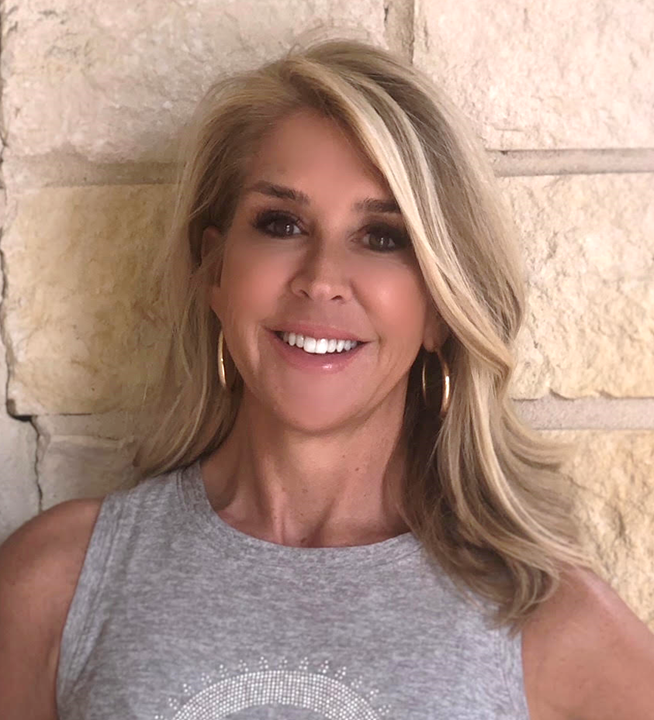In the movie “Steel Magnolias,” Dolly Parton famously exclaims, “Time marches on, and pretty soon, you realize it’s marching right across your face!”
It starts when you notice that first furrow in your brow or crinkle of a crow’s foot in your late 30s or early 40s. Nothing a little Botox can’t fix, right? Then, as menopause begins to set in, it’s as if every new day brings a new line, a new crease, a new wrinkle, until one day you catch a glimpse of your reflection and see a much older woman staring back at you.
Do women age faster after menopause? It may seem like it because the aging process is sped up during the menopausal years thanks to decreases in estrogen and other reproductive hormones, which play a role in keeping our skin tight, smooth, and supple. And while you can’t stop the aging process completely, you CAN slow it down with the right products and treatments, along with good old fashioned common sense.
What Causes Aging Skin After Menopause?
The skin changes that occur around menopause are largely affected by the three E’s: Estrogen, environmental factors and what you eat. As women age, estrogen levels drop, resulting in wrinkles, sagging skin, drier hair, and brittle nails. You may also notice more bruising or a slower healing of skin injuries, as well.
“Estrogen is a powerful stimulant for skin repair, collagen growth, and collagen renewal,” says Elizabeth Hughes M.D., a San Antonio, Texas dermatologist. “Without it, skin becomes less resilient.”
Because skin is thinner and more susceptible to damage, seriously considering environmental factors that can impact your skin become even more important.
The two biggies? Smoking and the sun. Both of these will age you faster than Mother Nature can alone. As Dr. Hughes explains, smoking affects your circulation, which means that key nutrients cannot be delivered to the skin as effectively, nor can toxins be removed as efficiently. As if that’s not enough reason to quit, there’s the damage that the actual cigarette smoke causes to the skin.
“When the facial skin is exposed to cigarette smoke causing increased inflammation and damage and you’ve got instant accelerated aging,” cautions Dr. Hughes.
In other words, put down the cigarettes, and pick up the sunscreen. Even if you were a golden goddess in your youth, it’s time to make sunscreen your new best friend and hang out with her Every. Single. Day. Not just when you are at the pool or beach. And yes, you should apply sunscreen even when it’s cloudy and even if you don’t plan to be outside for very long.
“Older skin does not weather the sun as well as young skin and shorter exposure times cause much more rapid, unsightly discolorations, and dry, crepe-like skin,” explains Dr. Hughes. She adds that these types of changes are most evident on the backs of the hands, cheeks, chest, and the skin around the eyes and mouth. “Over exposure to UV rays further breaks down collagen, causes discoloration of the skin, and increases what we call “solar elastosis,” which are the fine lines and yellowing and wrinkling of the skin from sun damage.”
Finally, let’s talk food. You’ve probably noticed that your body is going through changes as you experience the menopause transition. Body changes and weight fluctuations are common. With an adjustment to diet, it may be easier to maintain a healthy weight. You are what you eat and a diet heavy in processed foods, sugar, and sodium is going to show up around your waist—and on your face. Studies show that a diet made up of vitamin rich fruits and veggies, along with plenty of omega 3s like those found in salmon and avocado can help keep skin glowing and healthy. This is why the Mediterranean Diet is often a fan favorite of many menopausal women.
If you’re finding that you’re not getting your daily nutrients from your diet, it may not be a bad idea to consider dietary supplements to help fill some of the gaps. Be sure to speak with your healthcare provider to determine what supplements may be right for you if you’re looking to better support your skin and hair health during menopause.
Aging Skin After Menopause
If you are late to the party on a few of these things, don’t worry, you can still achieve beautiful, glowing skin and potentially even reverse some of the damage done to your skin before menopause.
First, resist the urge to slather on every product that promises results. You don’t need an arsenal of weapons, just a few with the right ingredients.
“Using too many chemicals on the facial skin can make it dry, irritated, and red,” cautions Dr. Hughes. “Gentle is better.”
Start by cleansing the skin to remove dirt and makeup. Dr. Hughes recommends warm, soapy water and cleansing skin in a gentle, circular motion. She goes on to recommend following this immediately with a moisturizer containing lactic acid for bright, soft, well-hydrated skin.
“This is an excellent choice for middle-aged, gorgeous faces.”
For more intense treatments that can reverse the damage done, it’s time to consider bringing out the big guns. Dr. Hughes says the results that can be obtained from broadband light is nothing short of “revolutionary,” in both delaying aging, and correcting and restoring the signs of aging.
There are several types of laser treatments available to address specific skin issues, so make sure you are consulting with a board-certified dermatologist who is well-versed in the various procedures available and can discuss options and realistic expectations with you.
Is It Aging After Menopause – Or Something More?
While dry, aging skin is normal, excessive dryness, or excessive hair loss is not, especially if it is accompanied by extreme fatigue. Dr. Hughes recommends checking in with your healthcare provider to rule out thyroid malfunction, low iron, and other nutritional deficiencies and other underlying issues, to help you get the treatment you need.
“We’ve made too many advances in medicine to let women suffer through menopause without intervention,” says Hughes. “You can have glowing, healthy smooth, clear skin at any age, you just need the right person and products to get you there.”








